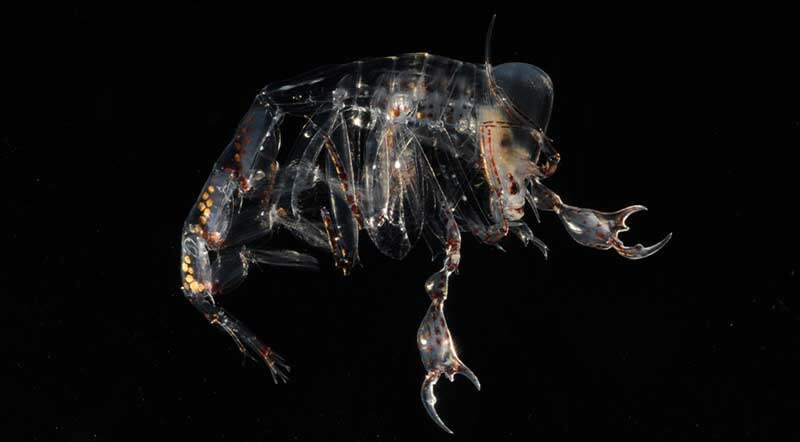The remarkable diverse eyes of a group of deep-sea crustaceans evolved in response to specific evolutionary drivers, according to research from The University of Western Australia.


The paper, by a team of biologists, including UWA lead author Dr Anna-Lee Jessop and project lead Associate Professor Jan Hemmi and experts from the Smithsonian National Museum of Natural History and Monterey Bay Aquarium Research Institute (MBARI), was published in the Proceedings of Royal Society B.
“Being able to see in the deep sea, one of the darkest places on the planet, is no easy feat,” Dr Jessop said.
“Yet many animals that inhabit this environment have evolved to have eyes that allow them to detect prey, mates and predators.”
The paper focused on a remarkable group of deep-sea crustaceans called hyperiid amphipods that are only found in the open ocean.
“What is particularly interesting about their eyes is that despite being a relatively small group of approximately 340 species, their eye diversity rivals that of the millions of insects on Earth,” Dr Jessop said.
“The need to see without being seen in this dim, uniquely challenging yet simple visual environment, has led to some extraordinary adaptations.”
The study used 3D imaging and computational modelling to compare the structure and function of the eyes of three different hyperiids.
“Hyperiid eye diversity reflects differences in their visual ecology, with host interactions, swimming ability, and the need to be transparent being important evolutionary drivers,” Associate Professor Hemmi said.
“The results suggested hyperiids have capitalised on the flexibility of compound eyes to fine-tune each species’ eyes for very specific tasks determined by their behavior and camouflage needs.
“Understanding the visual capabilities of different hyperiids also gives us clues to the behaviours of these difficult to observe animals’ and the important roles they play in open ocean communities.”
The team hopes the research outcome provides inspiration for the design of artificial visual systems that need to perform in challenging environments such as mines, space and the deep ocean.







































